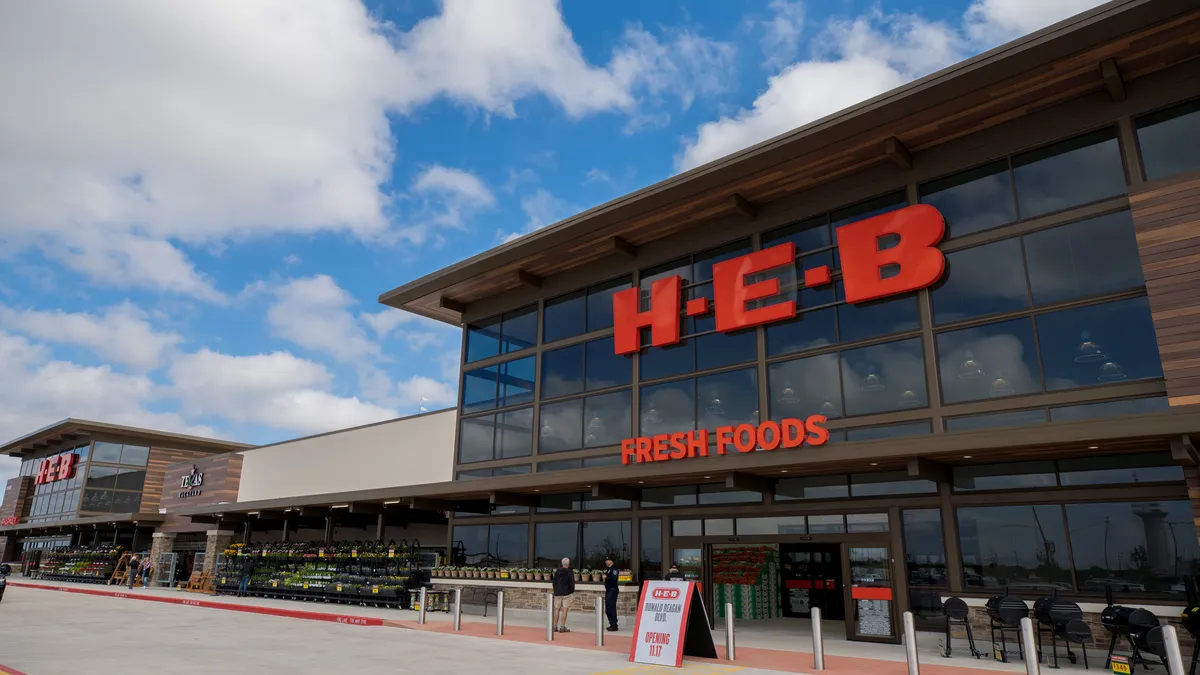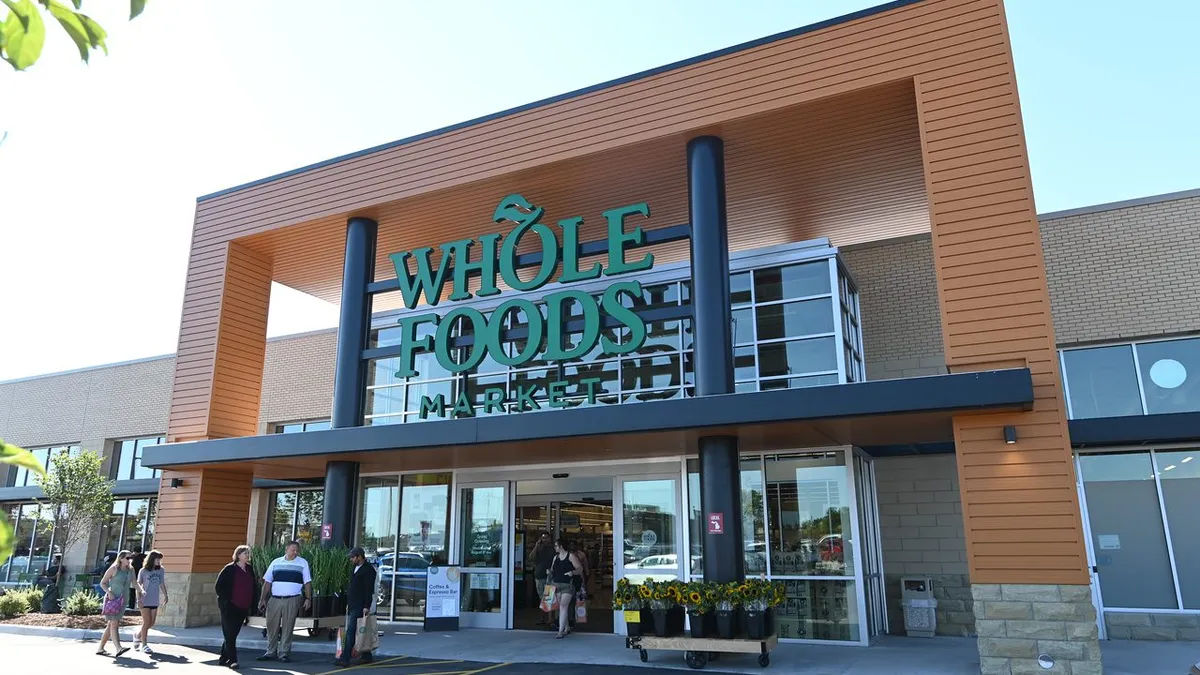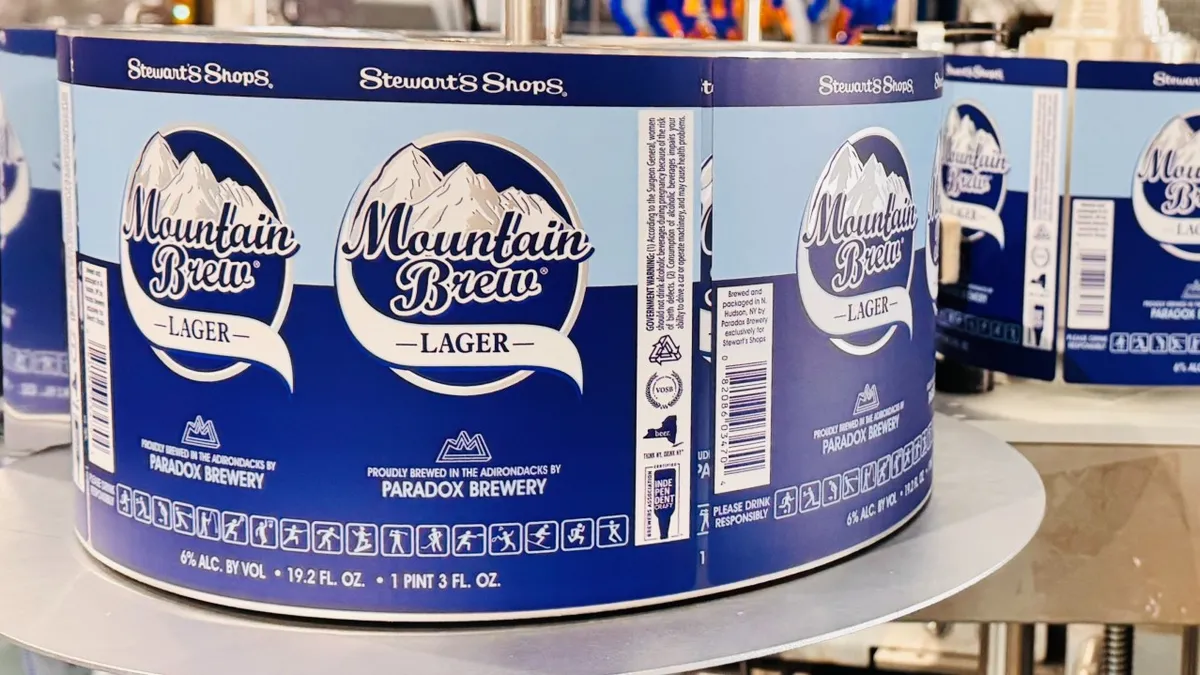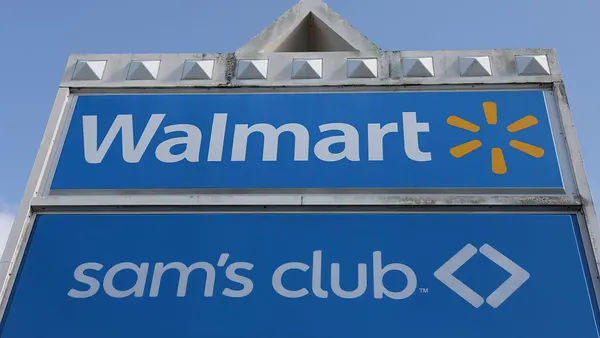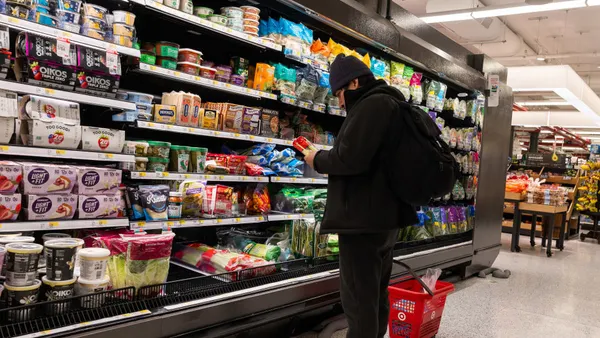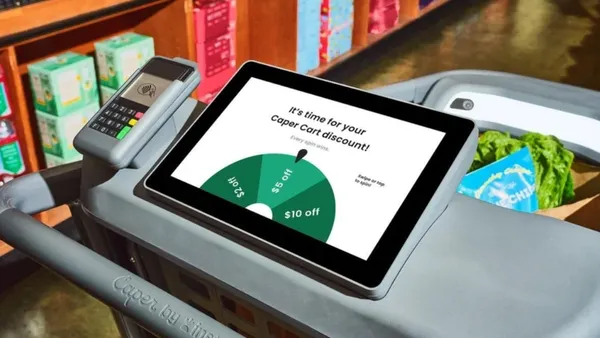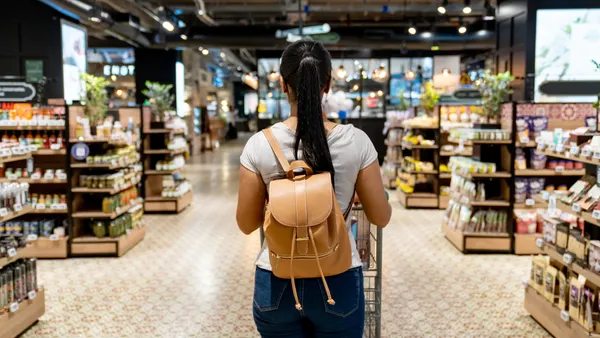Dive Brief:
- H-E-B took the top spot in Dunnhumby’s Retailer Preference Index for 2024 for the third year in a row, continuing the Texas retailer’s dominance of the annual predictive rankings of grocery chains based on their financial performance and shopper perceptions.
- New England regional grocer Market Basket claimed the No. 2 position on the list, moving up from the fourth spot in 2023, and Costco held onto third place. Idaho-based WinCo Foods surged 10 positions to No. 4, while Aldi took fifth place.
- Grocery chains owned by Kroger and Albertsons lost ground in the index in 2024 as the companies pressed ahead with their controversial and ultimately unsuccessful effort to merge, with Kroger’s King Soopers banner and Albertsons’ namesake banner both falling significantly.
Dive Insight:
Dunnhumby said that shoppers’ sense of how well a given grocer can help save them money through price, promotion and rewards held the greatest sway in 2024 over how well a retailer fared in its index than at any other time in the eight years it’s been published.
Retailers with better customer value propositions grew more than twice as fast over five years than retailers with lower scores in this area, according to Dunnhumby. The index takes into account customer and financial information about the 72 largest U.S. retailers that carry everyday food and non-food household goods.
The index also measures retailers in terms of customers’ perception of assortment quality, the digital services they offer, the consistency of their experience, and speed and convenience. Dunnhumby noted that the connection between a grocer’s digital operations and its overall success became less pronounced in 2024 for the first time. Quality also played a lesser role in predicting grocers’ performance in 2024 than it did in previous years, Dunnhunby said.
“This all signals that it is imperative that retailers double down on the fundamentals of grocery retail to set themselves up for future success,” Dunnhunby said in a report about the index published Wednesday. “Coupled with the continued emphasis on grocery inflation, pointing of the finger at CPGs and grocers in the press and by government institutions, and the promise of lowering grocery prices paramount in deciding the latest U.S. election, a consumer more scrutinous of prices than ever should be expected for the foreseeable future.”
Dunnhumby said the decrease in importance of how well grocers handle digital services proved particularly helpful to Lidl, which moved up 14 spots in the index to finish at No. 16. Lidl showed considerable strength in terms of how well shoppers view its ability to save them money even though its digital experience was underwhelming to them.
Trader Joe’s rose from No. 15 to eighth in the index, although its ascent was driven by its above-average ranking on quality. The retailer was the second highest-ranked retailer by that measure, but led other quality-first retailers in terms of shoppers’ perception of its ability to save them money, according to Dunnhumby.
Other retailers that finished in top 10 included Sam’s Club, which came in at No. 8, Wegmans at No. 9 and ShopRite at No. 10. Amazon moved down to the eighth spot — the first time in eight years that the company was not in the top five — as e-commerce lost influence.



